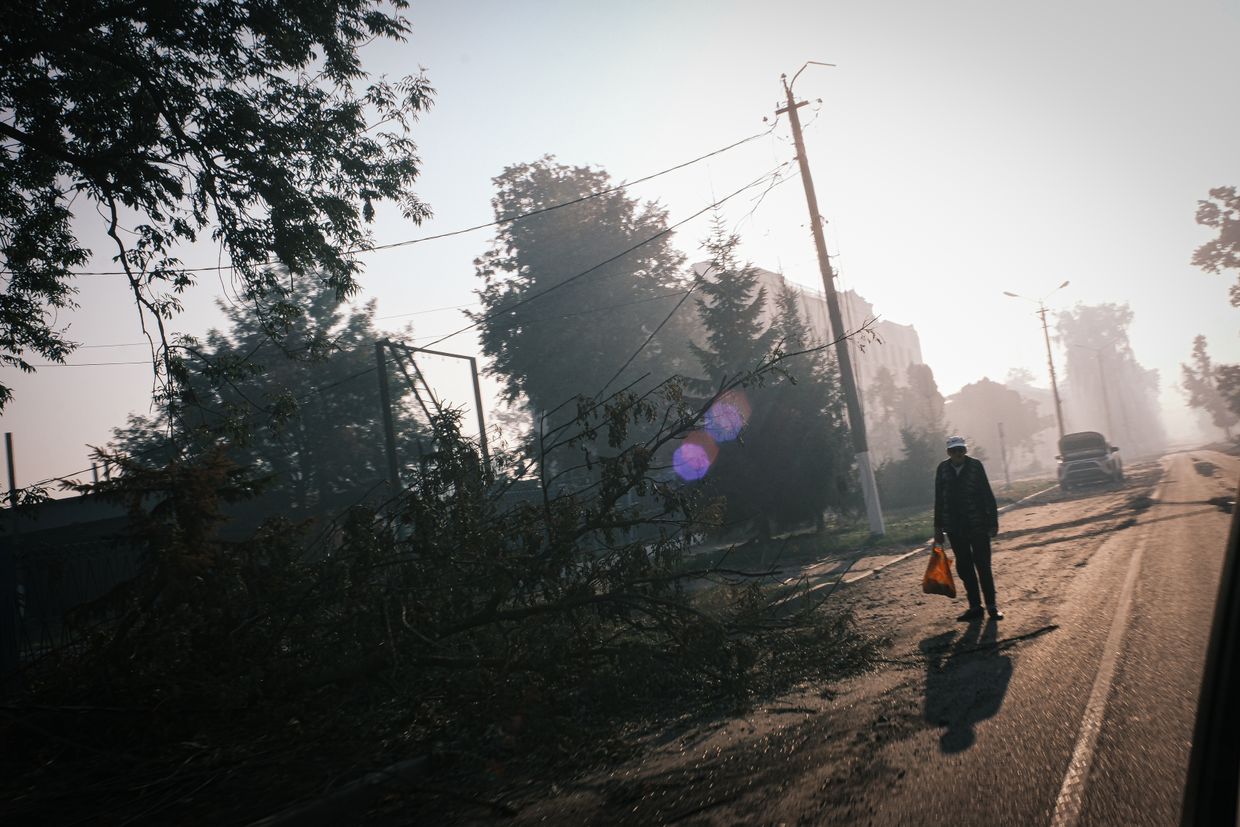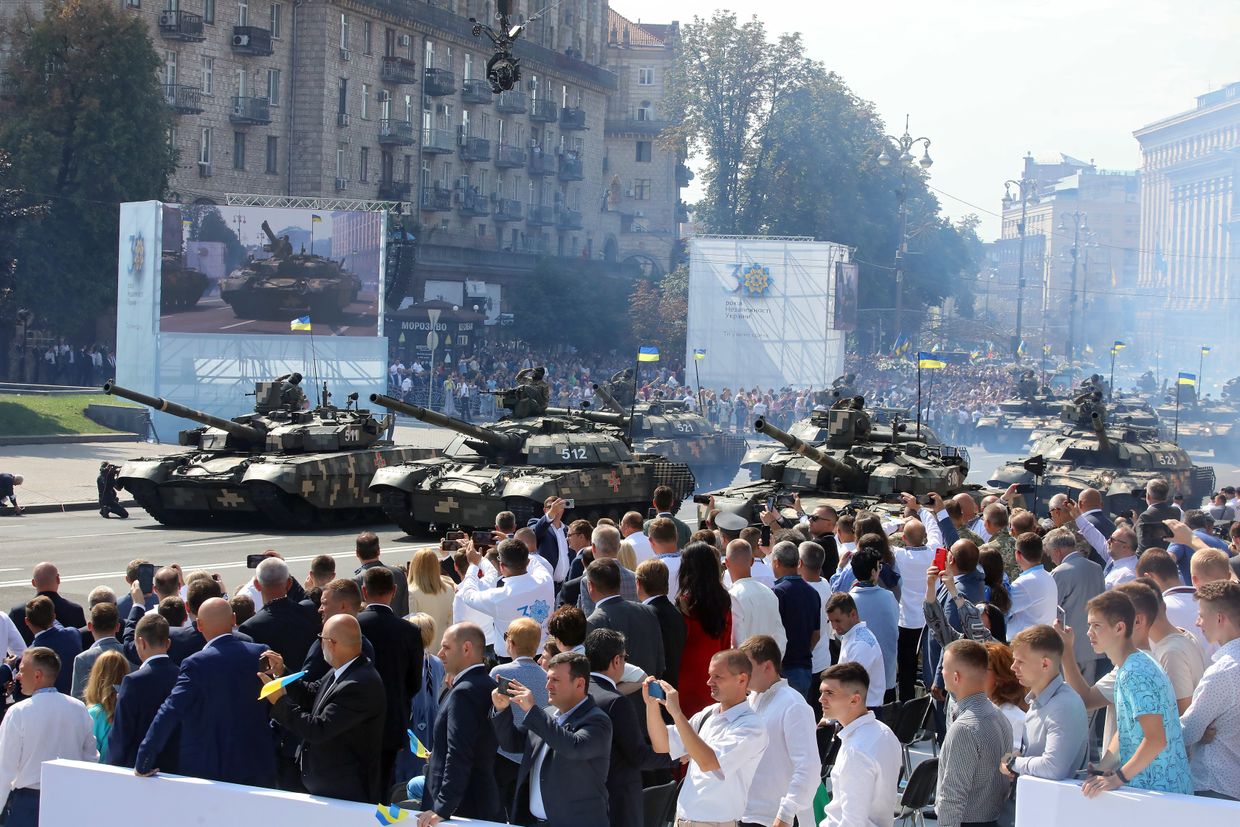On Aug. 24, 2021, Ukraine’s military finest paraded through the streets of Kyiv in celebration of the 30th anniversary of the country’s Independence Day.
It would be the last time such an event was held, with Russia’s full-scale invasion meaning everything on display would be put to the test, with the fate of the entire country resting on the shoulders of those who took part.
Ukraine successfully resisted the Kremlin’s original plans – what Russian President Vladimir Putin envisaged as a swift campaign to enter Kyiv turned into a grinding war now well into its third year.
In order to defend itself against Russia over the longer term, Ukraine has had to both adapt to rapid advances in battlefield technology, as well as rely on the continued military support of its Western allies.
Both of these factors mean Ukraine’s military today looks vastly different to that which paraded through the streets of Kyiv in 2021.
Drones
In terms of illustrating just how much Russia’s full-scale invasion of Ukraine has changed the rules of warfare, one of the best examples is the Bayraktar TB2 drone.
Proudly presented as one of the most modern weapons in Ukraine’s arsenal, the Bayraktar is already largely obsolete.
Ukraine began buying small numbers of the Turkish-made reconnaissance and attack drones in 2019, and in the early weeks of the full-scale invasion they were highly-effective, destroying Russian tanks, patrol boats, and even troops as they disembarked from a helicopter.
Such was the scale of the successes that the Bayraktar became a Ukrainian national symbol of resistance, and was even honored with its own song, and millions of dollars were raised around the world to buy as many as possible for Ukraine’s Armed Forces.
But by the early summer of 2022, the Bayraktar was already becoming increasingly ineffective as Russian air defenses and electronic warfare (EW) countermeasures became more organized.
By June 2023, Ukraine’s remaining drones were being used solely for reconnaissance, as they were being shot down with increasing frequency whenever they ventured near front-line positions.
“For the (Bayraktar) TB2, I don’t want to use the word useless, but it is hard to find situations where to use them,” an official from Ukraine’s defense intelligence (HUR) said in October 2023.
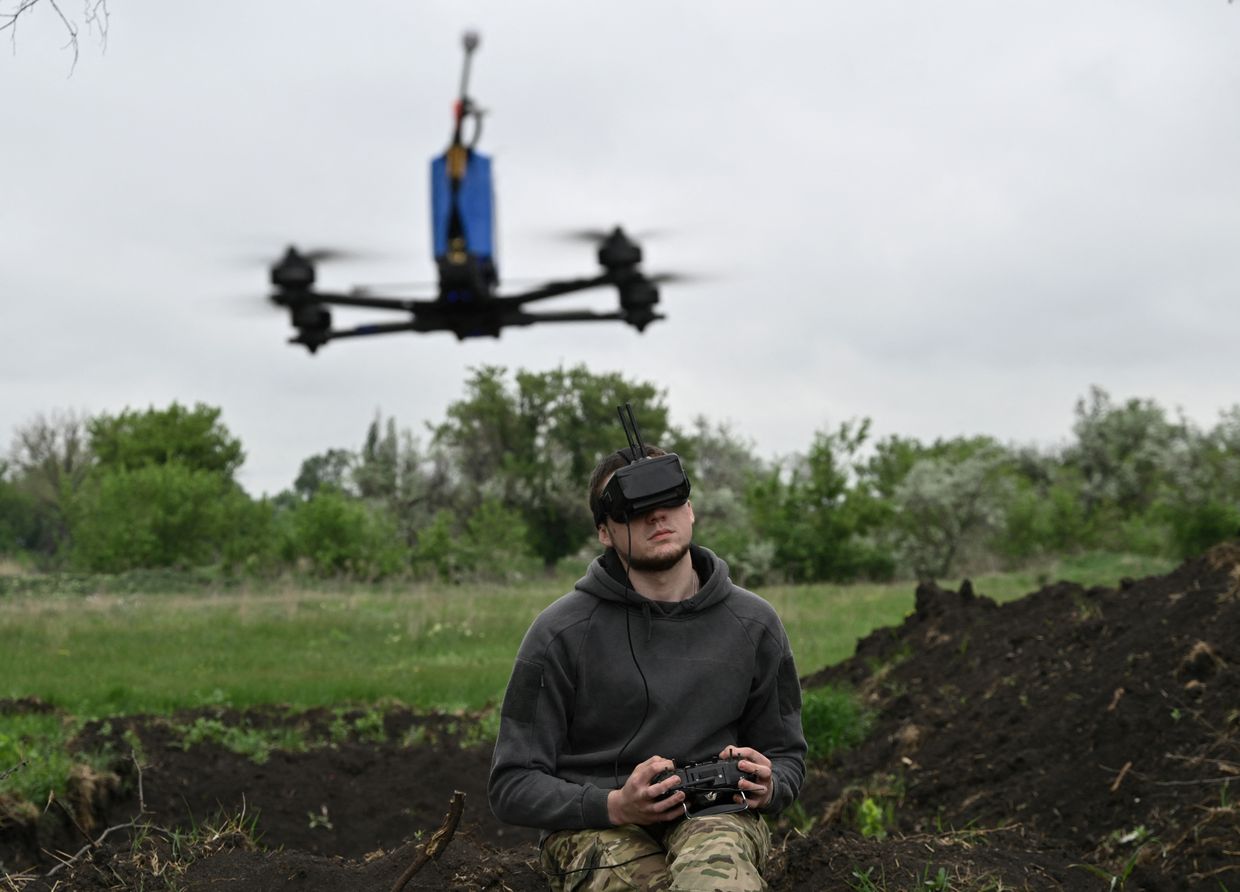
Of course, drones haven’t disappeared – they’re now one of the most crucial weapons on the battlefield.
But large, expensive models like the Bayraktar – each unit costs around $5 million – have fallen out of favor, replaced by cheap, kamikaze FPV drones that can cost as little as $300.
And the low cost belies their effectiveness – Ukraine has recently used them to take out Russian Mi-8 transport helicopters that cost millions.
Tanks
In 2021, Ukraine’s entire tank contingent consisted of Soviet-era models, albeit in modern digital camouflage like the T-64 pictured below.
Three years later, Ukraine’s tank army looks very different. The majority are still Soviet-era machines of various models – T-80s, T-72s, T-64s and others.
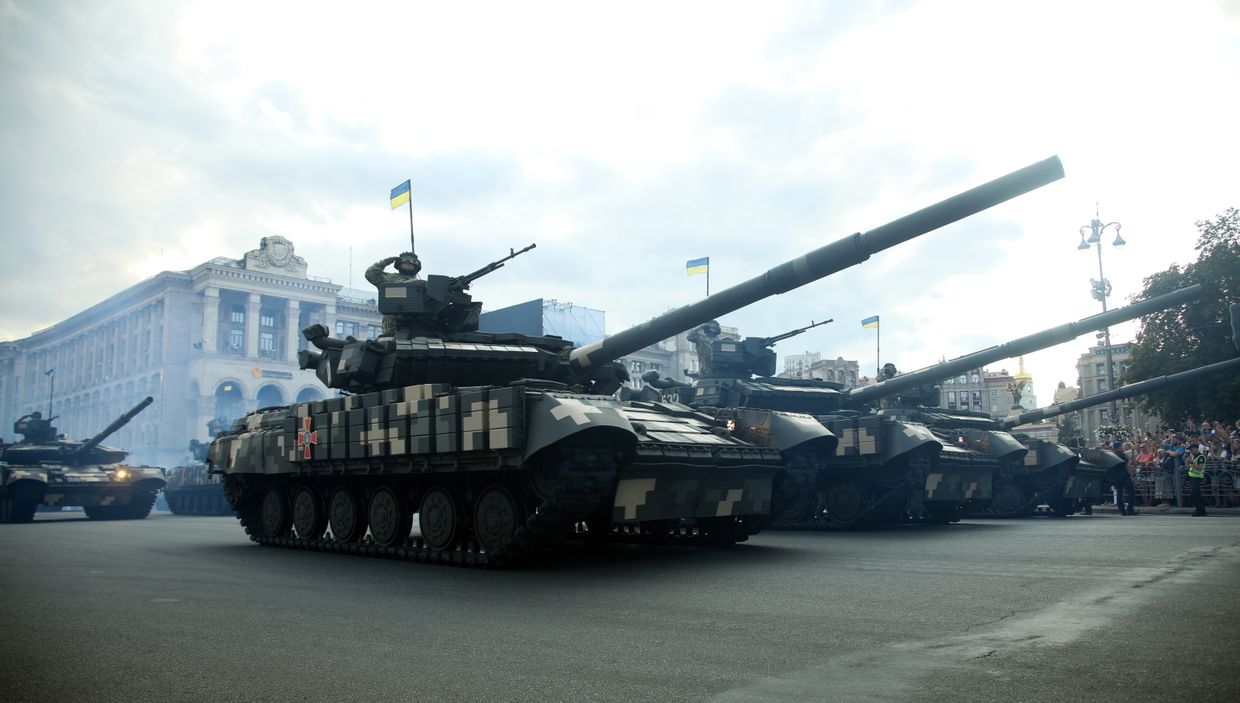
But there are some notable additions. Firstly, there are a sizeable number of Russian tanks captured by Ukraine and then redeployed to fight against their previous owners.
Most notably, a T-90, which Russian President Vladimir Putin once described as “the best tank in the world,” was seen manned by Ukrainian soldiers near the border with Russia in Sumy Oblast.
But most significantly are the plethora of models donated by Ukraine’s western allies since the start of the full-scale invasion.
The majority are hundreds of German-made Leopard 1 and Leopard 2 tanks that have been sent from several countries including Germany, Poland, Norway, Denmark and Spain.
Ukraine also fields much smaller numbers of U.K.-made Challenger 2 tanks, and U.S.-made Abrams.
Kyiv’s requests for heavy armor peaked in the run-up to its planned counteroffensive in 2023, but despite the Western weaponry, they would eventually fail to pierce the defensive positions of the Russian forces, with huge minefields being one of the major factors in stalling the advance.
But they’re still playing their part – British Challenger 2 tanks were used during Ukraine’s cross-border incursion into Kursk Oblast, the BBC and Sky News reported on Aug. 15, citing undisclosed sources.
Artillery
The story of Ukraine’s artillery situation during the full-scale invasion has been, at best, mixed.
On the one hand, Western allies provided Ukraine with hundreds of new units.
These ranged from towed pieces like the British-made L118 and the U.S.-made M114 howitzer, to self-propelled versions such as the Czech-made DITA, and the French Caesar.
They even have a handful of Archers, made by Sweden and considered one of the world’s most advanced artillery systems, capable of rapidly firing projectiles at a distance of up to 50 kilometers.
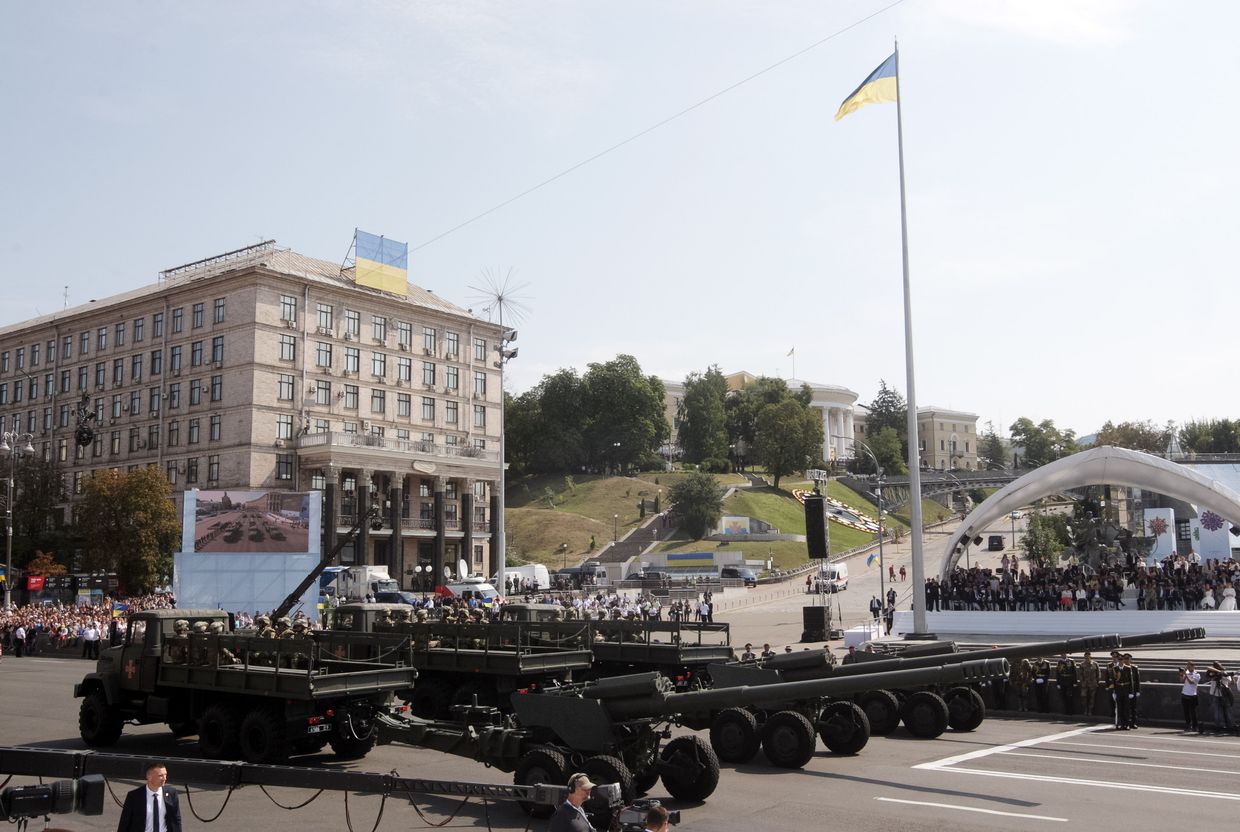
But there was a major problem – not enough NATO-standard 155mm shells to fire from all the artillery pieces Ukraine now found itself with.
Over the winter months, Ukraine’s Armed Forces suffered a critical shortage of artillery shells, in large part due to delays in U.S. military aid, as well as Western production levels simply not being geared up for a land war in Europe.
In January, Defense Minister Rustem Umerov said Ukraine was unable to fire more than 2,000 shells per day, around a third of what Russia was firing.
Europe raced to step up production, as well as source existing shells. Czech President Petr Pavel announced on July 12 that Ukraine would receive 50,000 shells under Prague’s ammunition initiative in July, with the deliveries rising to 100,000 rounds monthly from September.
Ukraine will also begin domestic production of NATO-standard 155 mm shells in the second half of 2024 at the earliest, according to a report in the Washington Post.
Infantry fighting vehicles
Ukraine’s 2021 fleet of Soviet-era infantry fighting vehicles (IFVs) has received a significant boost during the course of the war, meaning on today’s battlefield, Russia’s decades-old models regularly come up against some of the finest military vehicles on the planet.
The U.S. in particular was far less hesitant about sending their latest IFVs than they were about sending their latest tanks, and they have arrived in much larger numbers.
Whereas Ukraine received 31 Abrams tanks, Washington has sent more than 300 Bradleys, a vehicle that has proven itself to be absolutely formidable – even taking on Russia’s most advanced tank on the battlefield, the T-90.

These have been accompanied by German-made Marders, as well as Swedish-made CV90s, of which 1,000 will be produced in a joint manufacturing deal between Stockholm and Kyiv.
And not to mention, the “entire stock” of Sweden’s older Pansarbandvagn 302, which is currently on its way to Ukraine.
Sweden’s Pansarbandvagn 302 approved by Ukraine – but is it any good?
Ukraine announced on Aug. 19 that it had approved Sweden’s Pansarbandvagn 302 (PBV 302) for delivery to its armed forces. The “entire Swedish stock” of the infantry fighting vehicles (IFVs) was a part of Stockholm’s largest tranche of military aid for Ukraine worth $1.3 billion, announced in late M…

Aircraft
Despite its supposed military might, Russia has never been able to establish air superiority over Ukraine.
Vastly smaller than Russia’s, Ukraine’s Soviet-era air force, bolstered by Western-supplied air defense systems, has been able to retain a critical fighting capacity during the war, though not enough to dislodge Moscow’s forces from occupied territory.

Find more statistics at Statista
After a very long wait, F-16 fighter jets have recently arrived in Ukraine, though it’s too early to tell what effect they will have on the battlefield.
A special mention should go to one of the stars of the 2021 parade – the Mriya.

The Antonov An-225 Mriya was an engineering marvel – it was the heaviest aircraft ever built, and once held the record for the longest wingspan of any operational aircraft in the world.
It first flew in 1988 and was designed specifically to carry Soviet-era space shuttles.
And to get a sense of just how big it was, check out this video of it landing in Hostemel in 2021.
But just a few months after this video was filmed, the plane – the only one of its kind – was destroyed.
During January and February 2022 as the prospect of war grew, NATO officials advised Ukraine to redeploy the Mriya to the Leipzig Airport in Germany.
On Feb. 24 it was ready to go, but Russia’s full-scale invasion put paid to any plans of moving the plane to a safe country.
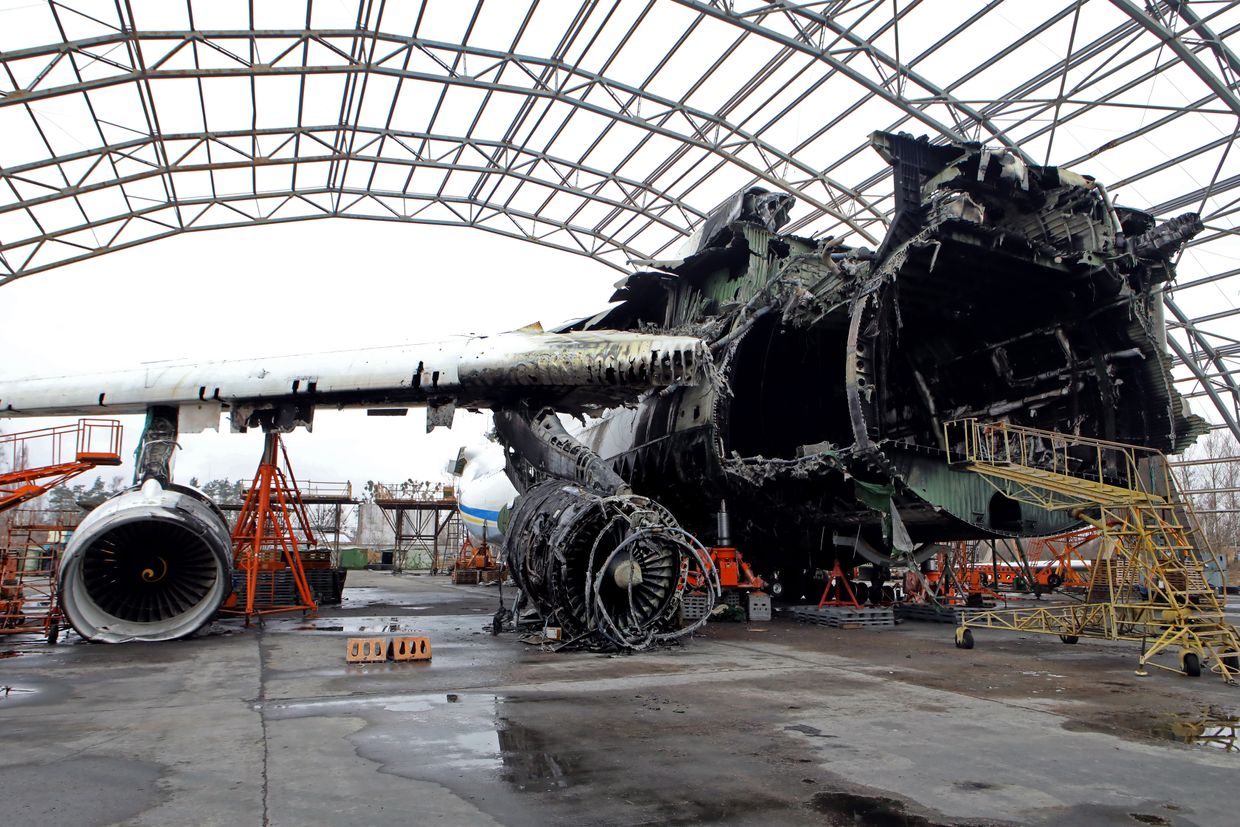
The Antonov airport was one of Russia’s primary targets, and capturing it would have allowed Moscow’s forces to land reinforcements and launch a larger attack on Kyiv, just 10 kilometers away.
Ukraine repelled the attack but the Mriya was destroyed in the fighting.
Morning in Sudzha: Inside Ukrainian-occupied Russia as Kursk operation continues
Editor’s note: The Kyiv Independent traveled into Russia’s Kursk Oblast with Ukrainian soldiers during the ongoing Ukrainian cross-border offensive in the area. Since the trip constitutes an unsanctioned crossing of the state border between Russia and Ukraine, the identities of the author of the rep…
